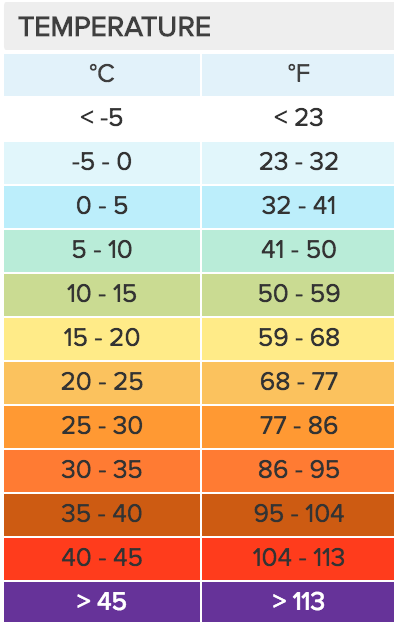Australian Government Bureau of Meteorology, New South Wales
Minor Flood Warning For The Barwon River
Issued at 01:26 PM EST on Wednesday 24 April 2024
Flood Warning Number: 12
RIVER LEVELS LIKELY TO FALL BELOW THE MINOR FLOOD LEVEL AT MUNGINDI WEDNESDAY AFTERNOON
Minor flooding is easing along the Barwon River at Mungindi as floodwaters which have arrived from the Weir River (QLD) and Macintyre River continue to move downstream.
The flood peak along the Barwon River has passed Mungindi where minor flooding is likely to ease on Wednesday afternoon. This peak, combined with floodwaters from the Macintyre River, may cause prolonged elevated river levels downstream of Mungindi for the coming days.
Barwon River Mungindi to Collarenebri:
Minor flooding is occurring along the Barwon River Mungindi to Collarenebri.
The Barwon River at Mungindi peaked at 6.96 metres around 03:00 am Saturday 20 April and is currently at 6.17 metres and falling, with minor flooding.
The Barwon River at Mungindi is likely to fall below the minor flood level (6.10 m) Wednesday afternoon.
The Barwon River at Mogil Mogil is currently steady around a peak of 7.15 metres, below the minor flood level (7.50 m).
Flood Safety Advice:
In life threatening emergencies, call 000 (triple zero) immediately. If you require rescue, assistance to evacuate or other emergency help, ring NSW SES on 132 500.
* Avoid drowning. Stay out of rising water, seek refuge in the highest available place.
* Prevent damage to your vehicle. Move it under cover, away from areas likely to flood.
* Avoid being swept away. Stay out of fast-flowing creeks and storm drains.
* Never drive, ride or walk through flood water. Flood water can be deceptive and dangerous.}
For more emergency information, advice, and access to the latest river heights and rainfall observations and forecasts:
* NSW SES: www.ses.nsw.gov.au
* RMS Live Traffic: www.livetraffic.com
* Latest River Heights and Rainfall Observations: www.bom.gov.au/nsw/flood/outerwest.shtml
* Latest NSW Warnings: www.bom.gov.au/nsw/warnings/
* Rainfall Forecasts: www.bom.gov.au/australia/meteye/
* BOM NSW Twitter: www.twitter.com/BOM_NSW
Next issue:
The next warning will be issued by 02:00 pm EST on Friday 26 April 2024.
Latest River Heights:
Barwon River at Mungindi,6.17,Falling,10:30 AM WED 24/04/24
Barwon River at Mogil Mogil,7.15,Steady,12:45 PM WED 24/04/24
Barwon River at Collarenebri,4.43,Steady,12:00 PM WED 24/04/24
Barwon River at Walgett,8.27,Steady,12:45 PM WED 24/04/24
Barwon River at Brewarrina,2.79,Steady,12:45 PM WED 24/04/24
Darling River at Bourke,4.50,Steady,12:45 PM WED 24/04/24
Darling River at Louth,2.01,Steady,11:45 AM WED 24/04/24
Darling River at Tilpa,1.52,Steady,11:15 AM WED 24/04/24
Darling River at Wilcannia,0.72,Steady,12:00 PM WED 24/04/24
Darling River at Menindee Town,3.33,Steady,12:45 PM WED 24/04/24
Darling River at Menindee Weir 32,1.44,Steady,12:00 PM WED 24/04/24
Darling River at Pooncarie,1.96,Steady,12:00 PM WED 24/04/24
Darling River at Burtundy,0.84,Steady,12:00 PM WED 24/04/24
This advice is also available by dialling 1300 659 210. Warning, rainfall and river information are available at www.bom.gov.au/nsw/flood. The latest weather forecast is available at www.bom.gov.au/nsw/forecasts.
Forecast
Forbes (33.3853°S, 148.0079°E, 233m AMSL) set as my default location ›
-
My MLA
-
Current condition
TODAY3° 22° Chance of rain: 5% Likely amount: < 1mm First
light

Last light Sunrise Sunset 6:13am EST 6:39am EST 5:33pm EST 5:59pm EST NOW4.7° Feels Like: 3.0° Relative Humidity: 81% Dew: 1.7° Wind: N 0km/h Gust: 0km/h Rainfall since 9am: 0.0mm Pressure: 1022.4hPa -
Today Weather
ForbesNow4.5°cFeels Like:2.9°Wind:N 0km/hGusts:0km/hHumidity:86%3°Min22°MaxToday in ForbesSunny. Patches of morning frost in the S. Winds S 15 to 20 km/h becoming light in the evening. Overnight temperatures falling to between 3 and 8 with daytime temperatures reaching the low to mid 20s.Tomorrow2°Min25°MaxSunny. Winds E/SE 15 to 20 km/h tending E/NE in the morning then becoming light in the middle of the day. Overnight temperatures falling to between 3 and 9 with daytime temperatures reaching the low to mid 20s. -
Radar
-
Popup Radar
-
Warnings
-
7 day forecast
Today: Sunny. Patches of morning frost in the S. Winds S 15 to 20 km/h becoming light in the evening. Overnight temperatures falling to between 3 and 8 with daytime temperatures reaching the low to mid 20s.
Forecast for Forbes (33.3853°S, 148.0079°E, 233m AMSL) Fri Sat Sun Mon Tue Wed Thu Summary Minimum 3° 2° 7° 10° 8° 5° 3° Maximum 22° 25° 26° 25° 22° 19° 19° Chance of rain 5% 5% 5% 60% 30% 10% 5% Likely amount < 1mm < 1mm < 1mm 1-5mm 1-5mm < 1mm < 1mm UV index Moderate Moderate Moderate Moderate Moderate Moderate Moderate Fire Danger Rating Moderate Moderate Moderate Moderate - - - Frost risk Moderate Moderate Nil Nil Nil Slight Slight 9am 3pm 9am 3pm 9am 3pm 9am 3pm 9am 3pm 9am 3pm 9am 3pm Wind speed 4
(km/h)7
(km/h)8
(km/h)7
(km/h)9
(km/h)11
(km/h)13
(km/h)13
(km/h)10
(km/h)17
(km/h)13
(km/h)19
(km/h)13
(km/h)17
(km/h)Wind direction S SW E NE ENE N NNE NW SW SW SSE S S S Relative humidity 69% 36% 64% 31% 66% 34% 60% 36% 74% 34% 67% 34% 68% 34% Dew point 6°C 5°C 8°C 6°C 11°C 8°C 11°C 9°C 11°C 5°C 6°C 2°C 6°C 2°C -
28 Day Rainfall forecast
-
12 Month Rainfall Forecast
Forbes Rain Forecast
Forbes 12-month Rainfall ForecastAprMayJunJulAugSepOctNovDecJanFebMar2024202586667761010587105012 - 34 - 78 - 910Well below normalBelow normalNear normalAbove normalWell above normalIssue Notes - Issued Apr 23
ENSO status: Inactive/Neutral. El Niño ended. IOD status: Neutral, becoming strongly positive. SAM status: Leading to neutral and returning positive. The El Niño Southern Oscillation (ENSO) is presently in an inactive phase, for the first time since August 2021. Ocean cooling continues over the eastern Pacific Ocean as sea surface temperatures approach near-normal conditions. Warmer than normal waters are present across the western Pacific Ocean, including the Coral Sea with added moisture and humidity to influence weather conditions in the eastern regions of Australia. The atmosphere continues to be firmly neutral after weakening early in the year with 3 out of 7 global models forecasting a La Niña to develop this coming winter season. A neutral ENSO typically has no significant impact on Australian rainfall during winter. The Indian Ocean Dipole (IOD) is in a neutral phase, although record-high ocean temperatures across the northwest Indian Ocean have the IOD index just tipping into a positivethreshold value. Persistent southeasterly winds over the eastern Indian Ocean during the previous month are forecast to ease with below-average wind speeds to develop off northwest Australia and the eastern Indian Ocean during the winter season. All international models are suggesting the IOD will strengthen into a strong positive phase over the next 2-3 months, with significant upwelling to start near Indonesia possibly following May. A positive IOD reduces the number of northwest cloudbands that cross Australia during winter and spring, thus reducing rainfall across central and southeastern parts of Australia. The Southern Annular Mode (SAM) is currently positive (mid-April) with the outlook favouring a neutral phase forecast in May and then the likelihood of returning to a positive phase during winter. A positive SAM increases easterly winds, increasing rainfall and thunderstorm activity in the east. A positive SAM also reduces the impact of cold fronts and decreases the rainfall over southernAustralia. Rainfall outlooks are showing above-average rainfall over winter for WA and central and northern SA, and eastern regions of QLD and NSW. Conversely, below-average rainfall is expected for western TAS, southern SA, and most of VIC.
-
Popup - Daily historical
-
Long range rainfall forecast
-
Past 5 Days
Forbes Past 5 Days
This MonthMinimum Maximum Rainfall Sunday
Apr 214.7 °C 23.9 °C 0.0 mmMonday
Apr 225.2 °C 25.7 °C 0.0 mmTuesday
Apr 235.9 °C 26.9 °C 0.0 mmWednesday
Apr 2411.4 °C 20.9 °C 0.0 mmThursday
Apr 255.3 °C 19.9 °C 0.0 mmLegend -
Almanac
Almanac
Forbes minimum temp history (33.3853°S, 148.0079°E, 233m AMSL) MAXIMUM TEMPERATURE MINIMUM TEMPERATURE Hottest this month 26.9° 23/04/2024 Coldest this month 2.8° 10/04/2024 Hottest on record 35.1 06/04/2016 Coldest on record -1.8 22/04/2006 Hottest this year 41.2° 04/02/2024 Coldest this year 2.8° 10/04/2024 Long term average 24.6° Long term average 9.5° Average this month 23.2° Average this month 7.9° Hottest April On Record Avg. max. temp. 29.0° 2005 Coldest April on record Avg. min. temp. 6.1° 2006 Forbes rainfall history (33.3853°S, 148.0079°E, 233m AMSL) RAINFALL Wettest This Month 32.4mm 06/04/2024 Total This Month 46.2mm
5.0 daysLong Term Average 31.6mm 4.6 days Wettest April on record 72.4mm 2015 Driest on record 0.0mm 2013 -
Year to Date
Forbes Year To Date
Average Rainfall To Apr 176.0mm 22.1 day(s) Total For 2024 299.2mm 20.0 day(s) Total To This Day 2023 105.8mm 25.0 day(s) Wettest Day 55.6mm Feb 6 Lowest Temperature 2.8°C Apr10 Highest Temperature 41.2°C Feb 4 -
Popup - Radar
Weather Radar for Australia
Australia Radars
- Adelaide
- Adelaide Airport
- Adelaide Sellicks
- Albany
- Alice Springs
- Bairnsdale
- Bowen
- Brewarrina
- Brisbane
- Brisbane Airport
- Brisbane Marburg
- Broadmeadows
- Broome
- Cairns
- Cairns Airport
- Canberra
- Carnarvon
- Ceduna
- Coffs Harbour
- Dampier
- Darwin
- Darwin Airport
- Emerald
- Esperance
- Eucla
- Geraldton
- Giles
- Gladstone
-
Popup - Monthly historical
-
Climatology
Climate History
Forbes Climatology
Forbes Long-Term Averages
Long-Term Averages Jan Feb Mar Apr May Jun Jul Aug Sep Oct Nov Dec Ann Mean Max (°C) 34.5 32.7 29.4 24.6 19.4 15.5 14.7 16.5 20.5 24.9 28.8 31.8 24.4 Mean Min (°C) 18.3 17.4 14.5 9.5 5.5 3.7 2.7 2.9 5.2 8.7 12.7 15.3 9.7 Mean Rain (mm) 41.3 49.0 54.1 31.6 34.1 51.6 41.5 37.6 43.2 46.7 51.8 52.8 524.3 Mean Rain Days 6.1 5.3 6.1 4.6 6.9 12.1 12.3 9.8 7.2 7.0 7.0 6.5 89.7



